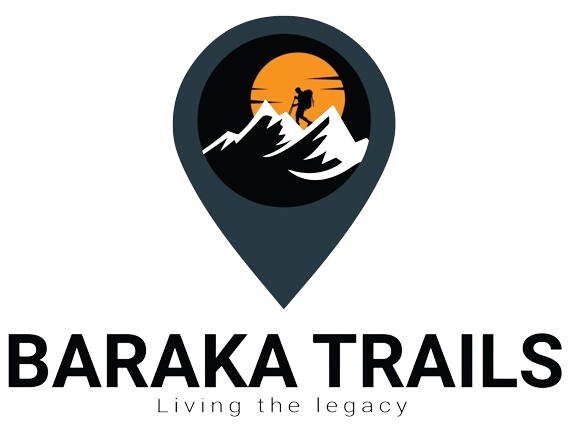SERENGETI NATIONAL PARK
Serengeti National Park, located in northern Tanzania, is part of the larger Serengeti ecosystem which extends into Kenya where it connects with the Maasai Mara National Reserve. Covering approximately 14,750 square kilometers (5,700 square miles), the park’s vast expanse includes grassy plains, savannah, riverine forests, and woodlands. The southern part of the park is characterized by the Serengeti Plains, treeless expanses that support the vast herds of migratory wildebeest and zebras. Granite outcrops known as kopjes dot the landscape, providing shelter for predators like lions and leopards, while the Grumeti and Mara Rivers flow through the park, playing crucial roles during the Great Migration.
Serengeti National Park is renowned for its diverse and abundant wildlife. It is home to over 70 large mammal species and more than 500 bird species. The park is most famous for the annual Great Migration, where over 1.5 million wildebeest, along with hundreds of thousands of zebras and gazelles, move in a continuous cycle in search of fresh grazing. This migration is one of the most spectacular wildlife events on Earth and includes dramatic river crossings, where the animals face formidable predators like crocodiles. The park offers excellent opportunities to see the Big Five: lions, leopards, elephants, buffalo, and black rhinos. Beyond the Big Five, the Serengeti boasts a high density of predators, including cheetahs, hyenas, and African wild dogs. Bird watchers can spot a variety of species, from large ostriches and kori bustards to colorful lilac-breasted rollers and diverse raptor species.
The park is divided into several regions, each offering unique landscapes and wildlife experiences. The Central Serengeti, known as Seronera, is rich in wildlife due to the presence of the Seronera River, which provides a year-round water source. This area is excellent for spotting lions, leopards, and cheetahs, as well as elephants and giraffes. The Western Corridor, characterized by dense bush and the Grumeti River, is famous for the dramatic Grumeti River crossings during the migration. The Northern Serengeti features rolling hills, open woodlands, and the Mara River, offering a serene and less crowded experience, especially during the migration. The Southern Serengeti, known for the calving season, attracts large numbers of herbivores and their predators from December to March.
Visitors to Serengeti National Park can engage in a variety of activities. Game drives are the most popular way to explore the vast plains and diverse habitats, with early morning and late afternoon drives being particularly rewarding. Hot air balloon safaris provide a unique perspective of the Serengeti’s landscapes and wildlife from above, typically ending with a champagne breakfast in the bush. Guided walking safaris offer an immersive experience, led by knowledgeable guides who provide insights into the flora and fauna, tracks, and smaller creatures often missed during game drives. Cultural visits to local Maasai communities allow visitors to learn about their traditions, culture, and way of life, including traditional dances, crafts, and tours of Maasai villages. Bird watching is another popular activity, with over 500 bird species inhabiting the park.
The best time to visit the Serengeti varies depending on the desired experience. The dry season from June to October is ideal for general wildlife viewing and seeing the Great Migration in the northern Serengeti and the western corridor. The wet season from November to May is best for bird watching and witnessing the calving season in the southern Serengeti, where the landscape is lush and green, and predator activity around young animals is high.
Accommodation in the Serengeti ranges from luxury lodges and tented camps offering premium services to mid-range camps providing a good balance of amenities and affordability, and budget campsites for more adventurous travelers. Luxury options such as Four Seasons Safari Lodge, Serengeti Serena Safari Lodge, and Singita Grumeti offer guided safaris, gourmet meals, and all-inclusive packages. Mid-range options like Serengeti Sopa Lodge and Kati Kati Tented Camp provide comfortable lodging and essential amenities. Budget camping is available for those looking to experience the Serengeti on a budget, offering basic facilities and the opportunity to be closer to nature.
When planning a visit to the Serengeti, it is important to pack appropriately. Lightweight, breathable clothing is recommended for the day, with warmer layers for the cool nights. Neutral colors are suggested to blend in with the natural surroundings. Visitors should consult with a travel doctor regarding vaccinations and malaria prophylaxis, and carry a basic first aid kit and personal medications. For photography, a good camera with a zoom lens is essential to capture the stunning wildlife and landscapes, along with extra batteries and memory cards. Ensure that all park entry permits and fees are arranged, often included in safari packages by tour operators.
Serengeti National Park is a must-visit destination for any wildlife enthusiast or nature lover. Its diverse ecosystems, rich biodiversity, and the awe-inspiring spectacle of the Great Migration offer an unparalleled safari experience. Whether you’re exploring the park on a game drive, soaring above in a hot air balloon, or immersing yourself in the local culture, the Serengeti promises adventure and memories that will last a lifetime.
